Is your mechanical keyboard too loud? O-rings can be a good option if you want to dampen the noise and make your keyboard more quiet.
Just be careful when picking them out, because O-rings can ruin the typing experience of your keyboard if you’re not careful.
If you’re interested in the best quiet mechanical keyboards, check out this article.
Let’s take a look at some of the best O-rings and explain how to choose the perfect ones for your mechanical keyboard without ruining the feel.
How to Choose O-Rings
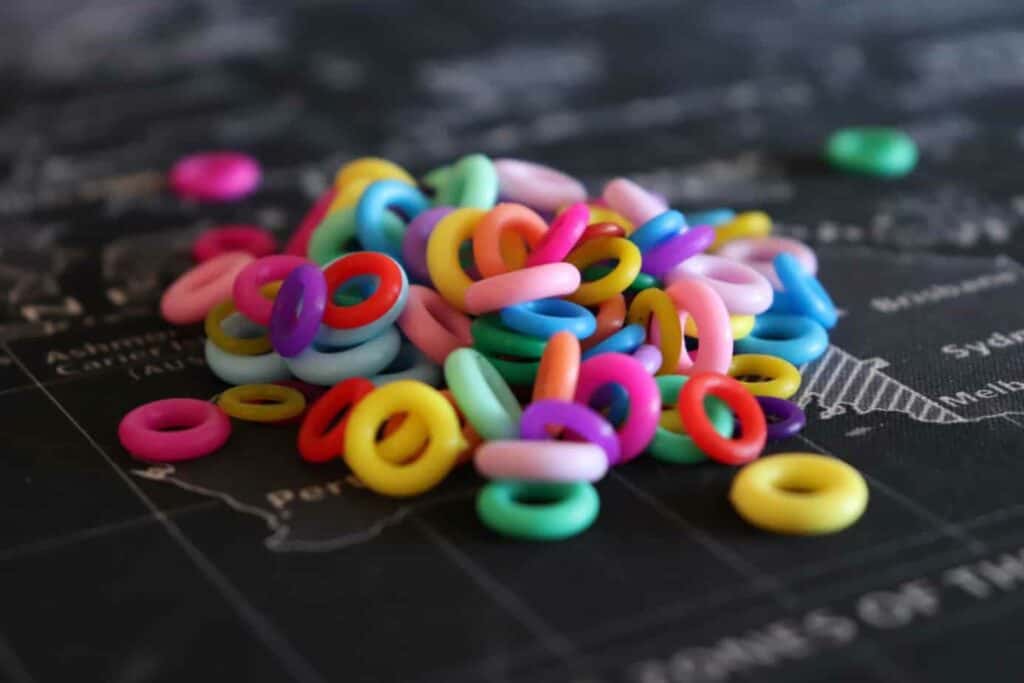
Before we dive into the list, it’s important to explain some of the different factors that determine how the O-rings will feel and sound.
Understanding this section is important. You don’t want to end up with a keyboard that feels incredibly mushy or isn’t as quiet as you would prefer.
Thickness
Thickness is a big factor when picking out an O-rings.
A thinner O-ring will preserve more of the feel of a normal keyboard and switch. The downside is it will only minimally reduce the sound level.
A thicker O-ring will give you a large reduction in the total travel distance and can result in a mushy feeling keyboard. But will also reduce the noise level much more than a thin O-ring.
I recommend using a thinner O-ring for your fist time as it can be stacked multiple times until the preferred sound reduction has been reached.
You just need to make sure you order enough O-rings for your keyboard if you plan on stacking them.
It’s all about finding a balance between the overall sound level and bouncy feeling. You want a quiet keyboard, but you also want your keyboard to feel satisfying and fun to use.
Durometer (Hardness)
The durometer is the second biggest factor. It refers to the overall hardness of a material. It will range between 0A-100A, with 100A being the hardest.
For example, a 90A durometer will result in a very hard O-ring, while a 30A durometer is quite soft.
The difference between the two is the 90A will have a lower sound reduction, but will feel more solid and less spongy.
A 30A O-ring will have most sound reduction but can result in an unpleasant feel.
Material Type
When looking at O-rings there are two main material types: rubber and silicone.
At the end of the day, the material type does not matter much. I would look mainly at the hardness and thickness when picking out O-rings.
Based on the material properties of both silicone and rubber, in theory silicone should last longer. But considering you’re using the O-rings in an indoor environment, I don’t think you need to worry too much about the wear-and-tear of the O-rings.
But if I had to choose one, I would go with silicone although the choice between the two matters little.
Color
You get to pick between several different colors. If you want to go for a certain aesthetic, feel free to choose whatever color works best with your setup.
If you want a color that will work with any build, a clear color is the best way to go. It won’t interfere with the RGB lighting on your keyboard.
A colored O-ring can change the color of the RGB when it reflects off of the surface of the O-ring.
It’s all about your personal design choice when picking the color. Clear is always the safest bet.
Our Recommendation
For your first O-ring set, we recommend a thin option that has a high hardness factor.
This allows you to stack multiple O-rings on top of each other until you reach the preferred feel and sound.
I would avoid a thick and soft O-ring because it could feel too soft and mushy. A thinner O-ring lets you experiment a little bit.
We also highly recommend an O-ring sampler pack so you can try all of the different options yourself.
Avoid purchasing the O-rings off of Amazon, they typically don’t tell you the hardness or thickness of the O-rings. You don’t actually know what you’ll end up with if you order them there.
We recommend mechanicalkeyboards.com for purchasing the O-rings. We are affiliated with them, but we truly believe they have the largest selection and are transparent about the properties of each O-ring.
1. Cherry MX Rubber O-Rings 50A 1.5mm
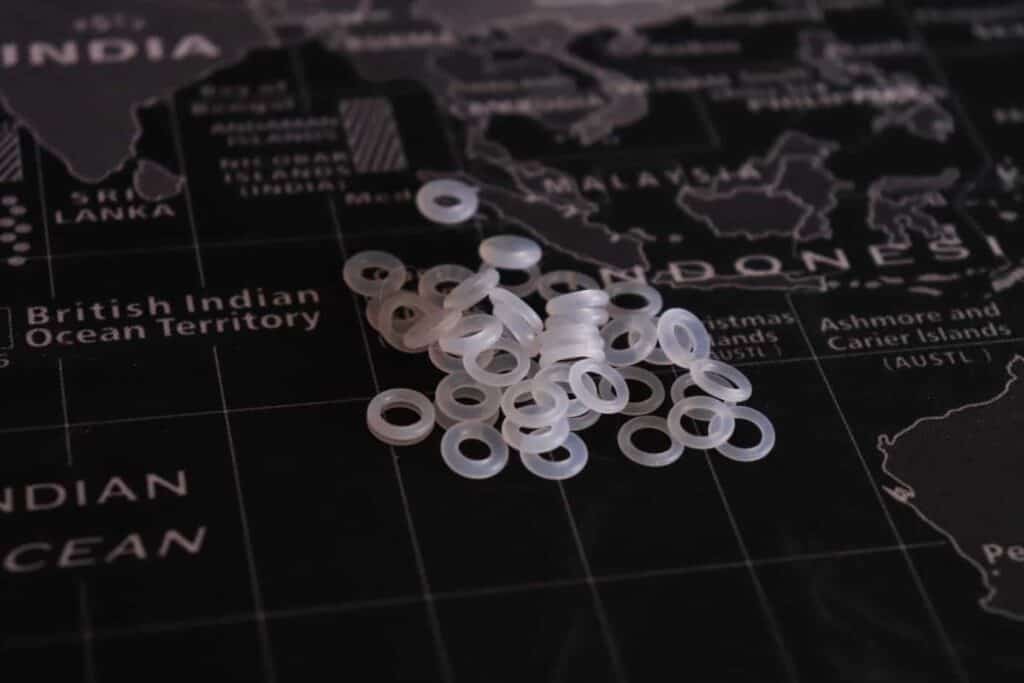
When looking to pick out O-Rings, my best recommendation is to pick out the thinnest option possible with a decent hardness factor.
For that reason, you can’t go wrong with the Cherry MX rubber 50A O-ring.
If you find the O-ring does not reduce the sound enough, you can always stack them on top of each other to improve the sound dampening.
50A is considered right in the middle in terms of hardness, but will still be soft enough for decent sound reduction on each keystroke. If I had to recommend an O-ring to a stranger off the street, this is the one I would recommend.
The color is clear so it works well with any keyboard color and won’t interfere with the RGB lighting.
2. Cherry MX Rubber O-Rings 90A 1.5mm
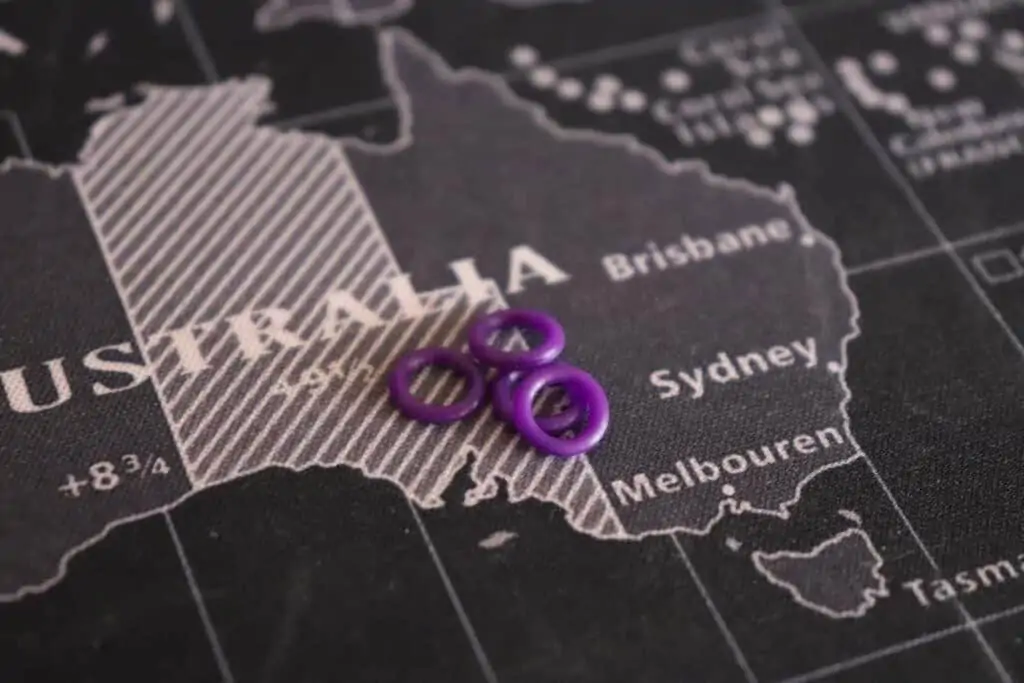
Another great thin O-ring option is the 90A Cherry MX rubber O-ring. This is perfect for those who want minimal sound reduction without sacrificing the feel of their keyboard.
If you want to avoid the bouncy feel that O-rings tend to bring to your keyboard, this is the best option.
At the same time, it won’t reduce the sound output of your keyboard as effectively as the other options. So if you’re looking for an ultra-stealthy keyboard, this probably won’t be the best option for you.
The purple color can be stylish depending on your keyboard, but if you don’t like it you can always browse the store for other options.
3. MK Pro Rings Silicone O-rings 50A 2.0mm

At this point, the O-rings are starting to get slightly thicker. At 2mm, this O-ring will start to reduce the total travel distance of your keys more and more.
With a hardness sitting at around 50A, you should start to see a significant reduction in the sound of your keyboard.
You’ll also really notice the change in feel. A good option for those who want a decent sound reduction but don’t want to go too crazy with the mushiness.
4. MK Pro Rings Silicone O-rings 40A 2.5mm
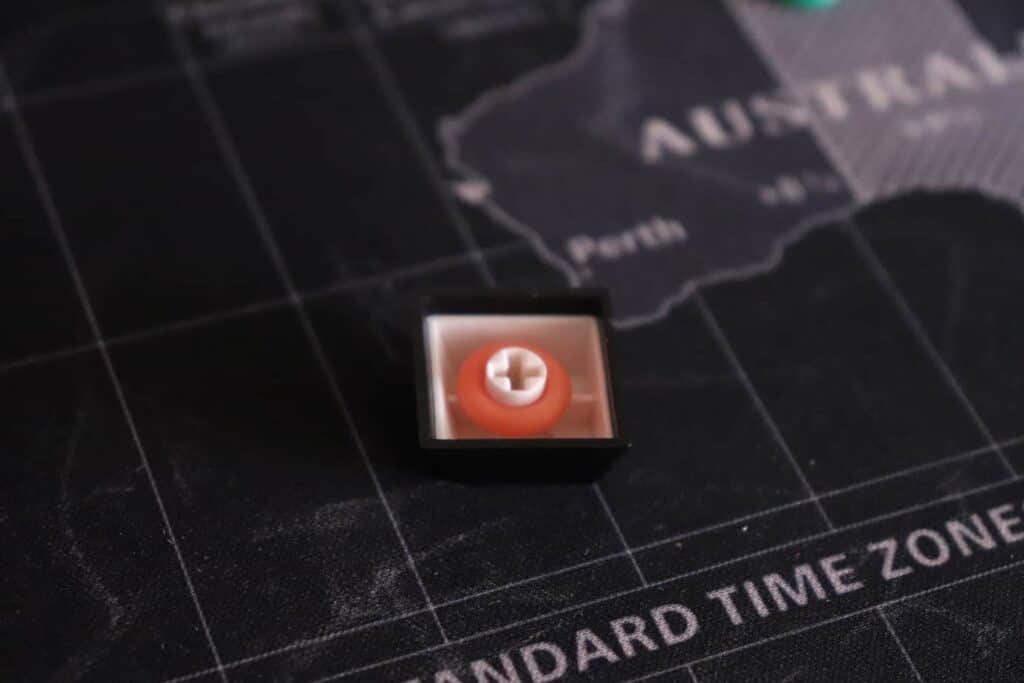
At 2.5mm, you’ll really start to feel the difference. Most switches have a total travel distance of around 4mm, so your keys won’t be travelling nearly as far at this point.
If you use a speed switch or low-profile switch, I would avoid anything thicker or you’ll have a hard time actuating the key with a shorter actuation distance.
The mush-level on this O-ring is quite significant. I would make sure you really know what you’re getting into before you buy this one.
5. MK Pro Rings Silicone O-rings 30A 3.0mm
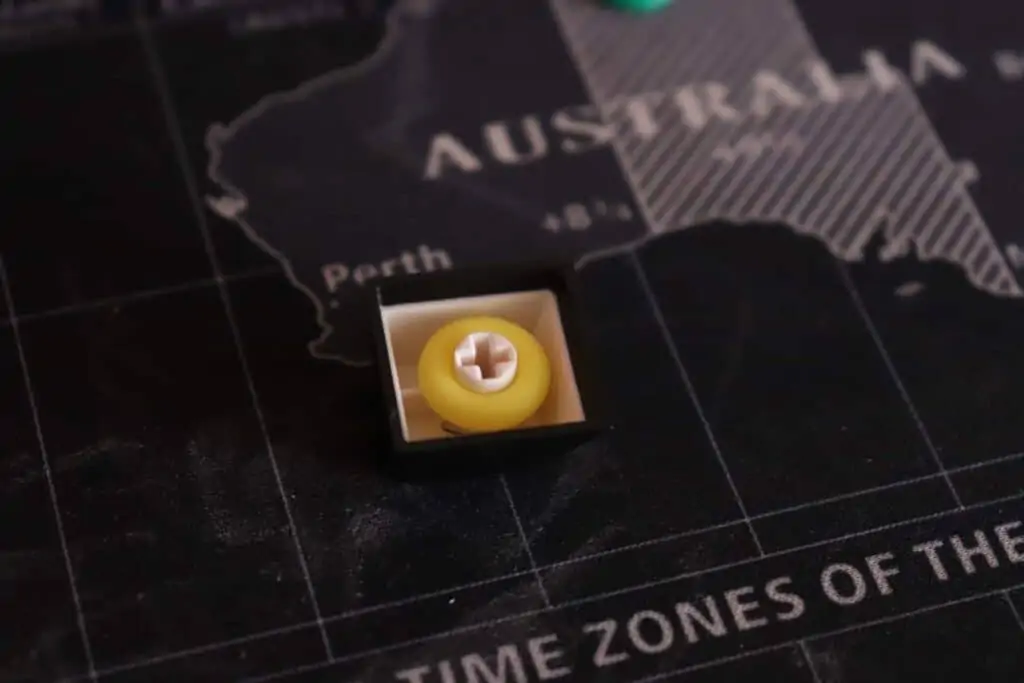
At 3mm, this is about the thickest you can go with an O-ring. You’ll have to really press on your keys to make them actuate.
At 30A, the O-ring is quite soft so you should feel a strong rubbery bottom out on each keystroke.
If you enjoy the rubbery feel and want the quietest possible option, this could be a good pick for you. You may have a bit of trouble getting your keycap on after installing the O-ring.
This is the most extreme option if sound reduction is the goal.
Do O-Rings Actually Make Your Keyboard Quieter?
If you’re installing O-rings, you’re probably trying to make your keyboard quieter, so how effective are they?
They can work wonders to make reduce the bottom out noise when you press a key, but there are certain sounds they don’t help with much.
For example, if you have a keyboard with a clicky switch (such as Cherry MX Blue), the O-rings won’t reduce the click noise on each switch. The sound is actually produced inside of the switch, so the O-rings don’t actually help.
Another sound O-rings won’t help with is the stabilizers. Many stabilizers that come on pre-built keyboards tend to be rattly and shaky. You can figure out if you have poor stabilizers by pressing the spacebar. If you hear a lot of rattling, it could be worth your time to mod them.
If you want more information on how to soundproof your keyboard, make sure to check out this post.
Conclusion
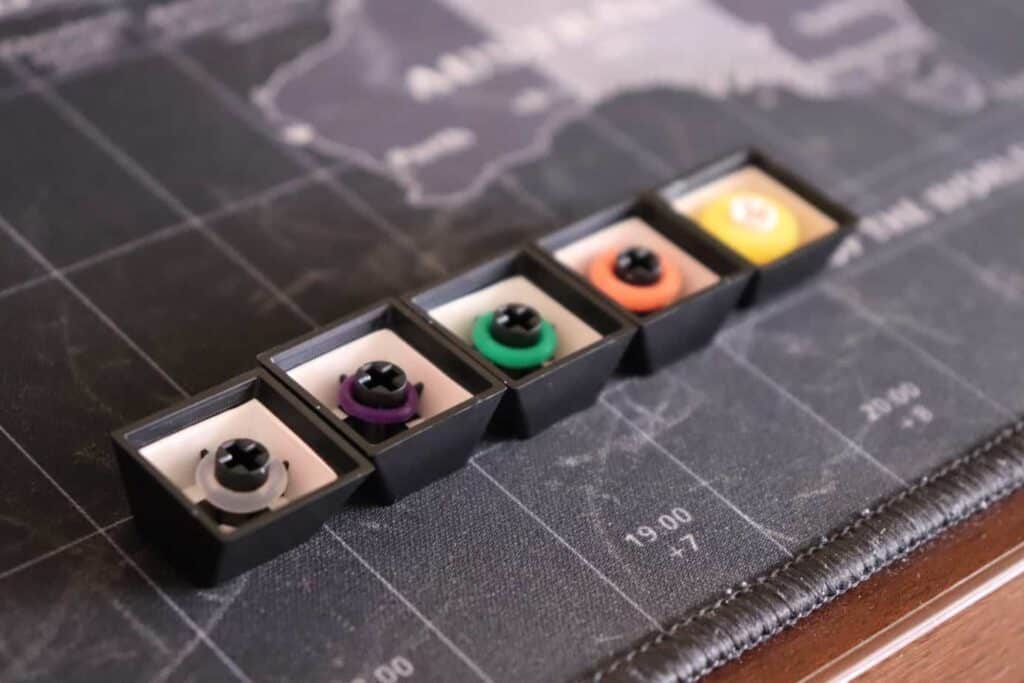
O-rings can be an excellent way to reduce the sound that your keyboard makes when bottoming out a key.
Choosing the right O-ring is all about experimenting and choosing the ideal thickness and hardness based on how important sound reduction is to you.
We recommend starting out with a thinner O-ring so you can stack them to test out how much sound reduction you actually need. Another great option is to get an O-ring sampler pack to try out all of the different options for yourself.
Just be careful when purchasing O-rings off of a website like Amazon, because they won’t always be transparent about hardness and thickness of the O-rings.
At the end of the day, O-rings aren’t for everyone. I personally can’t stand the rubbery feel when typing, but there are many people who swear by them. It’s up to you to test them out for yourself.
Good luck!
